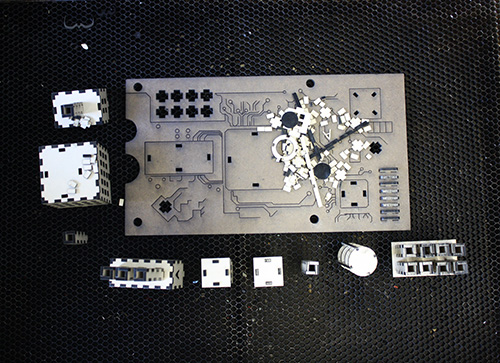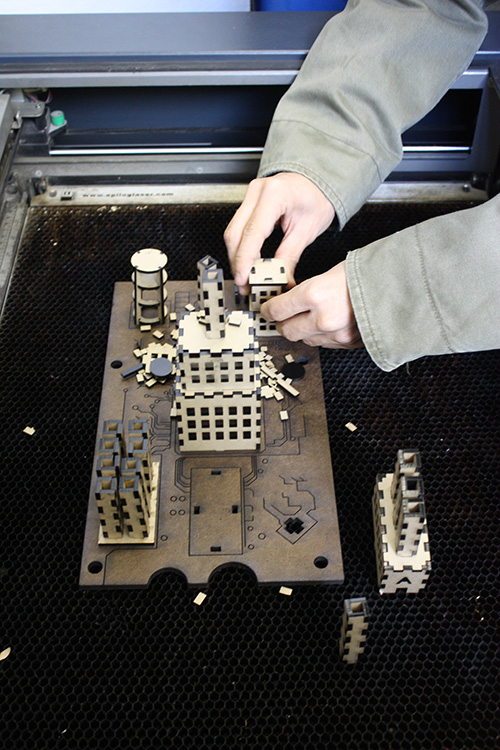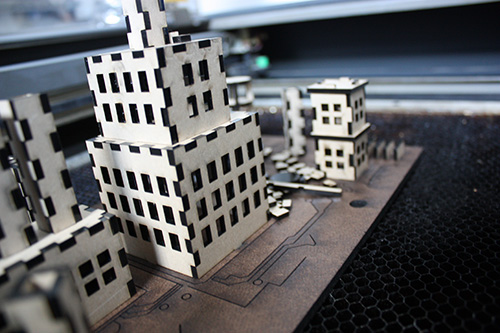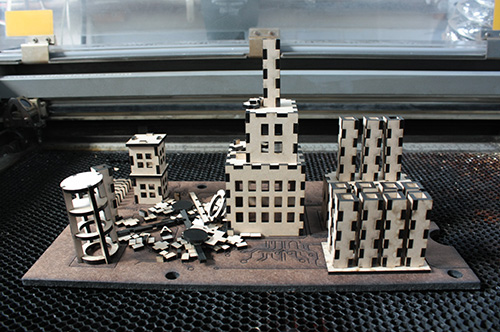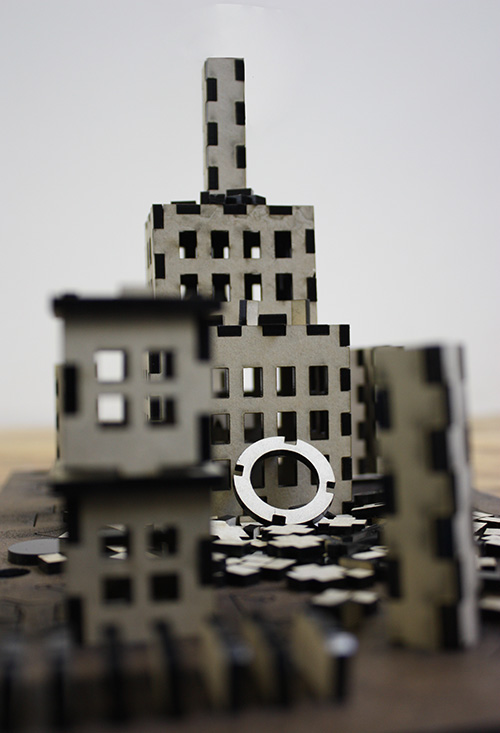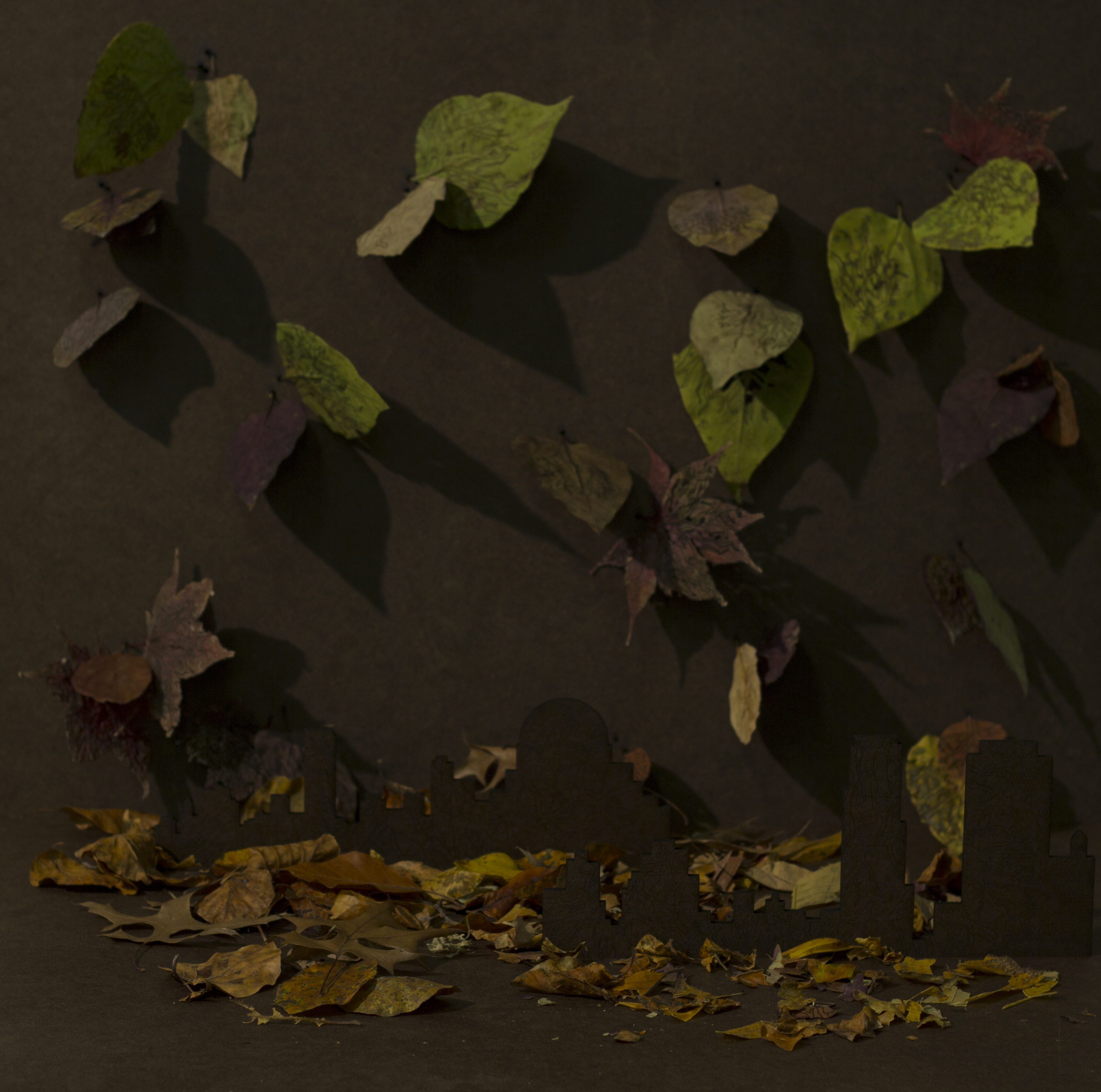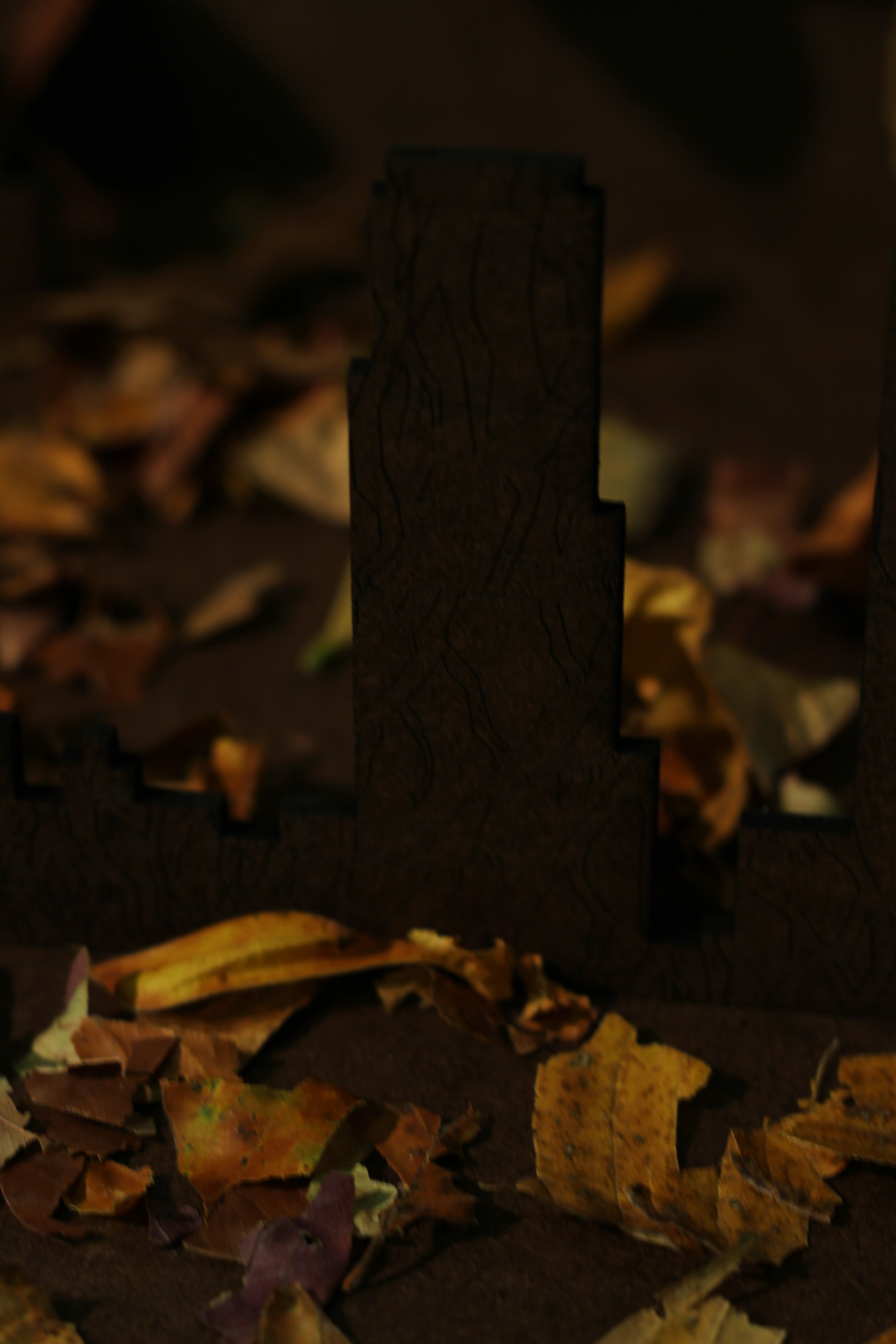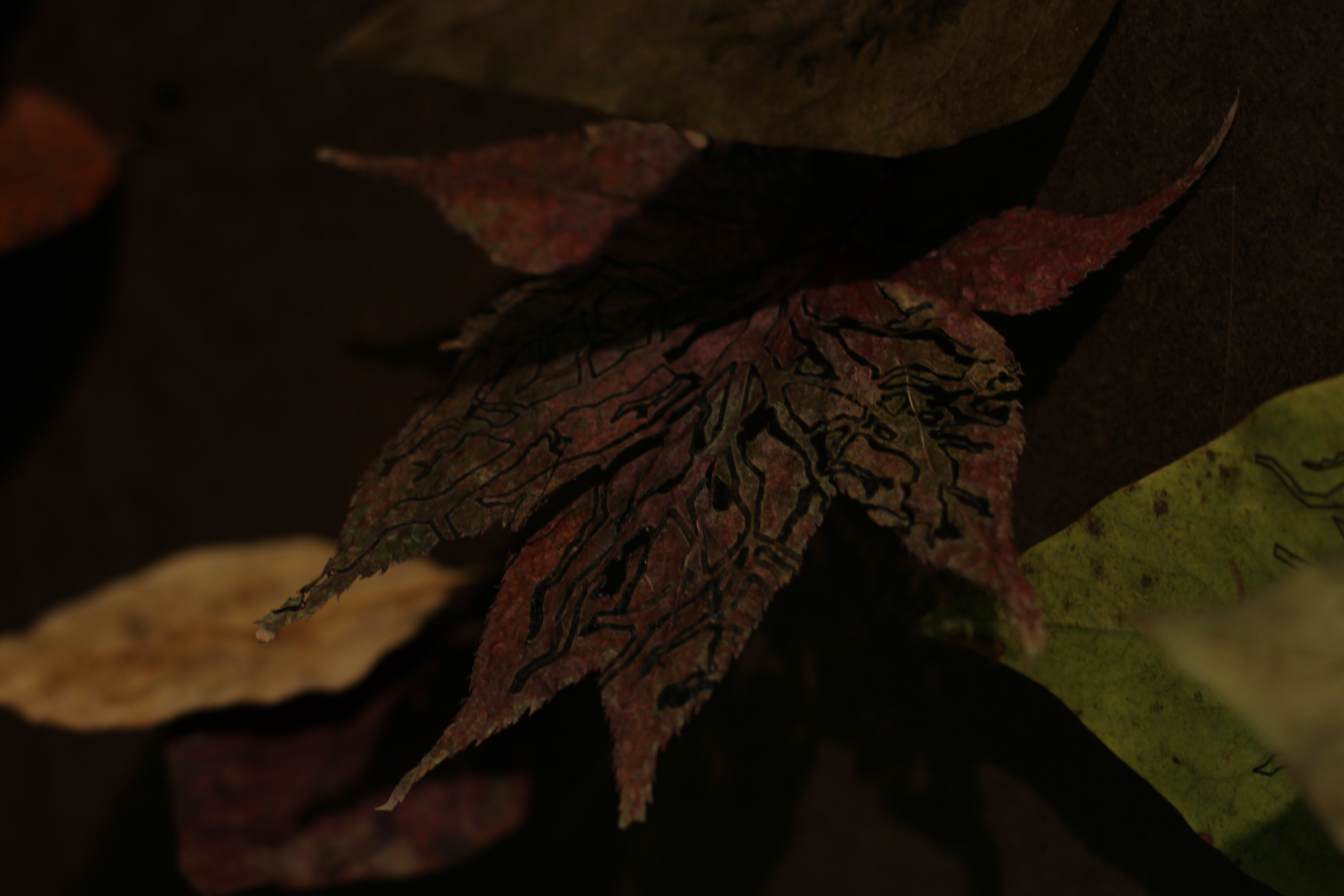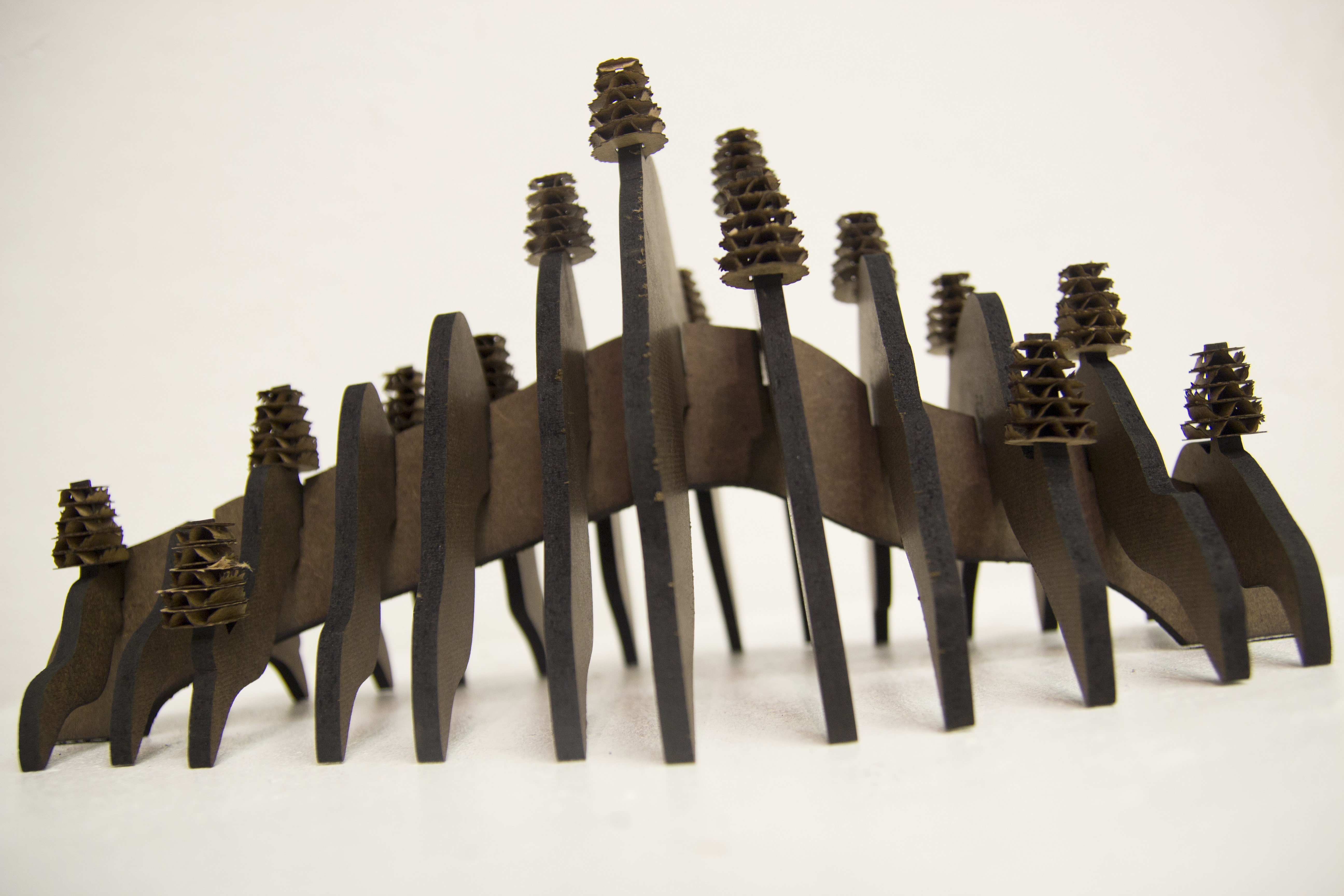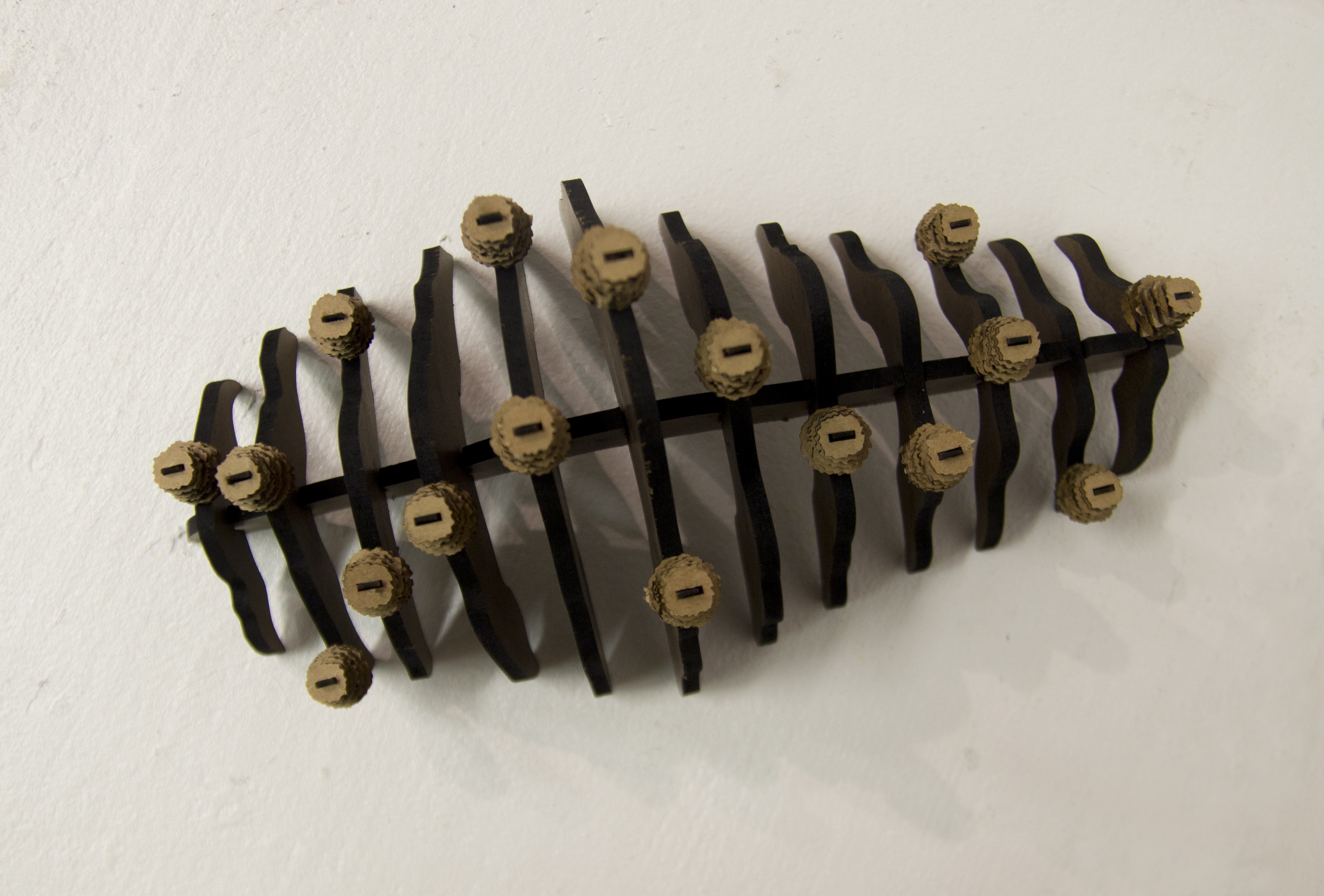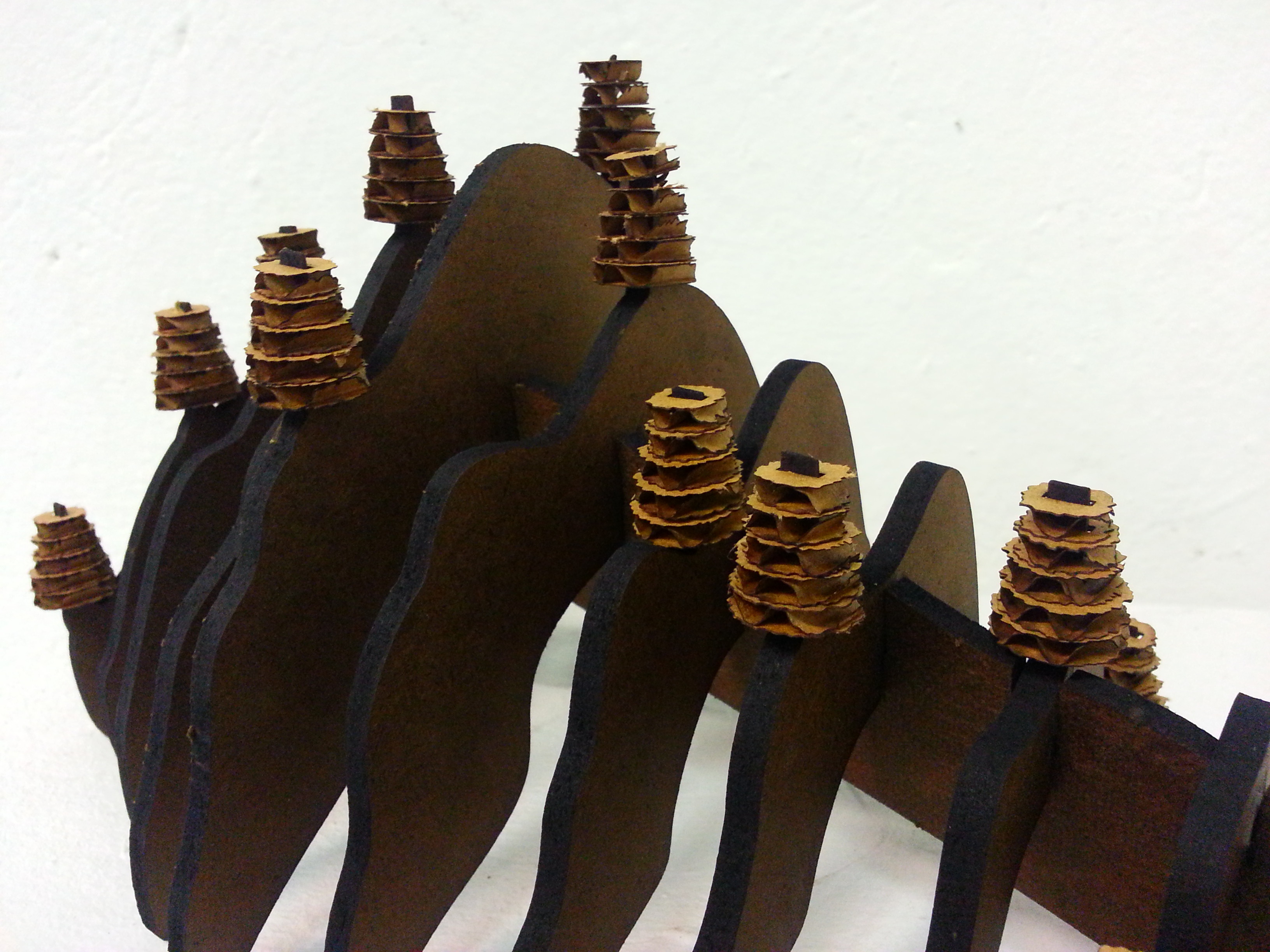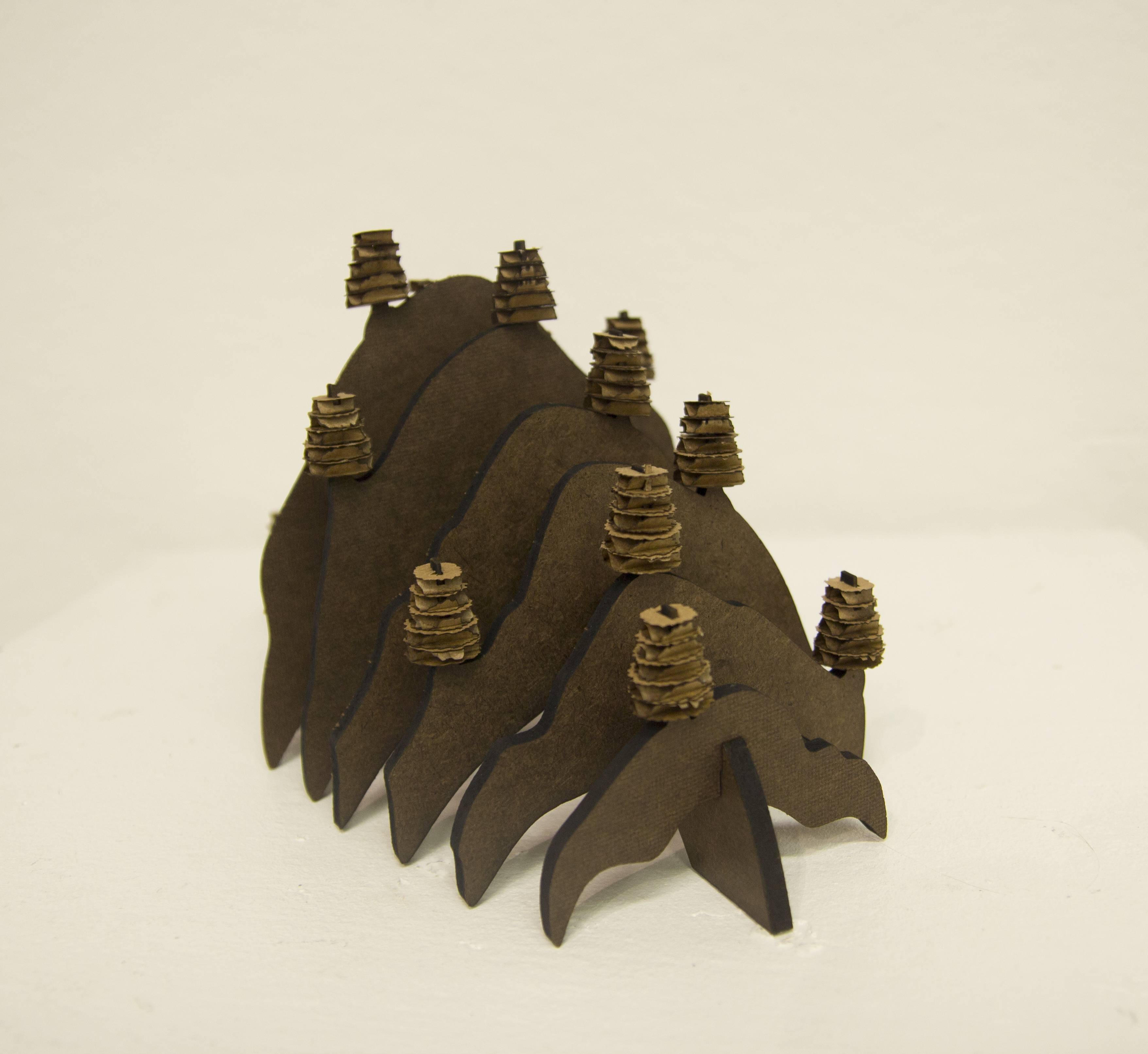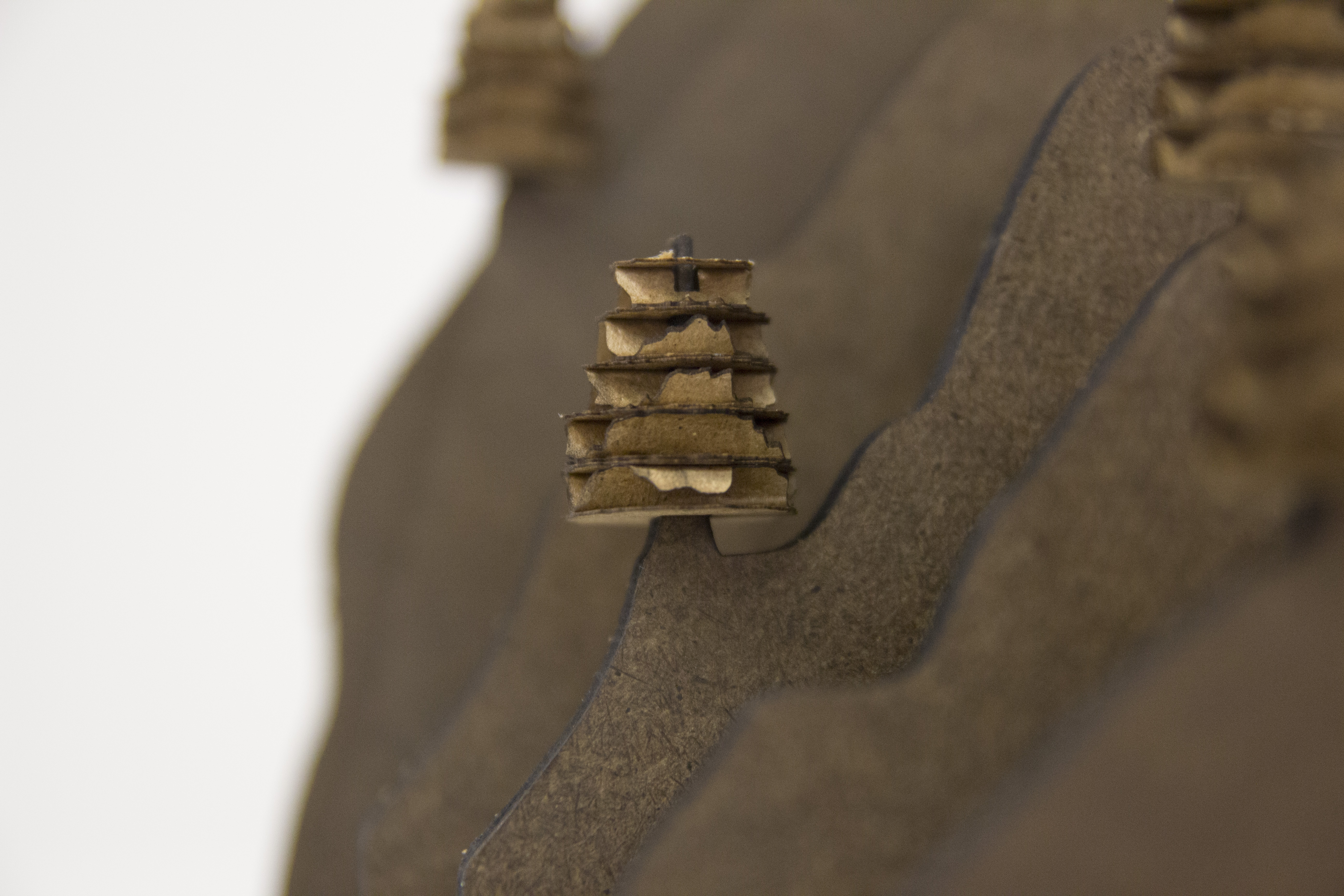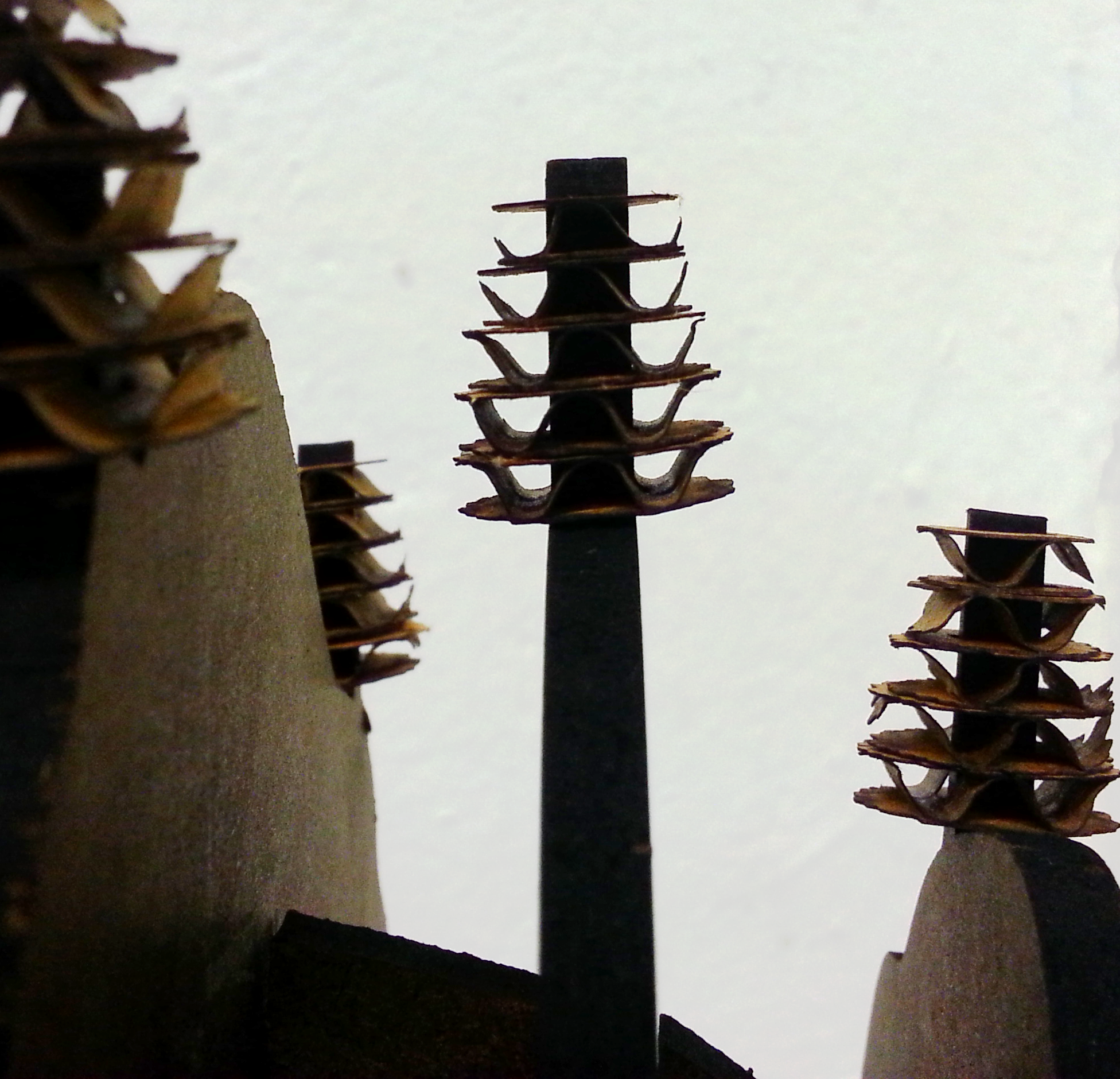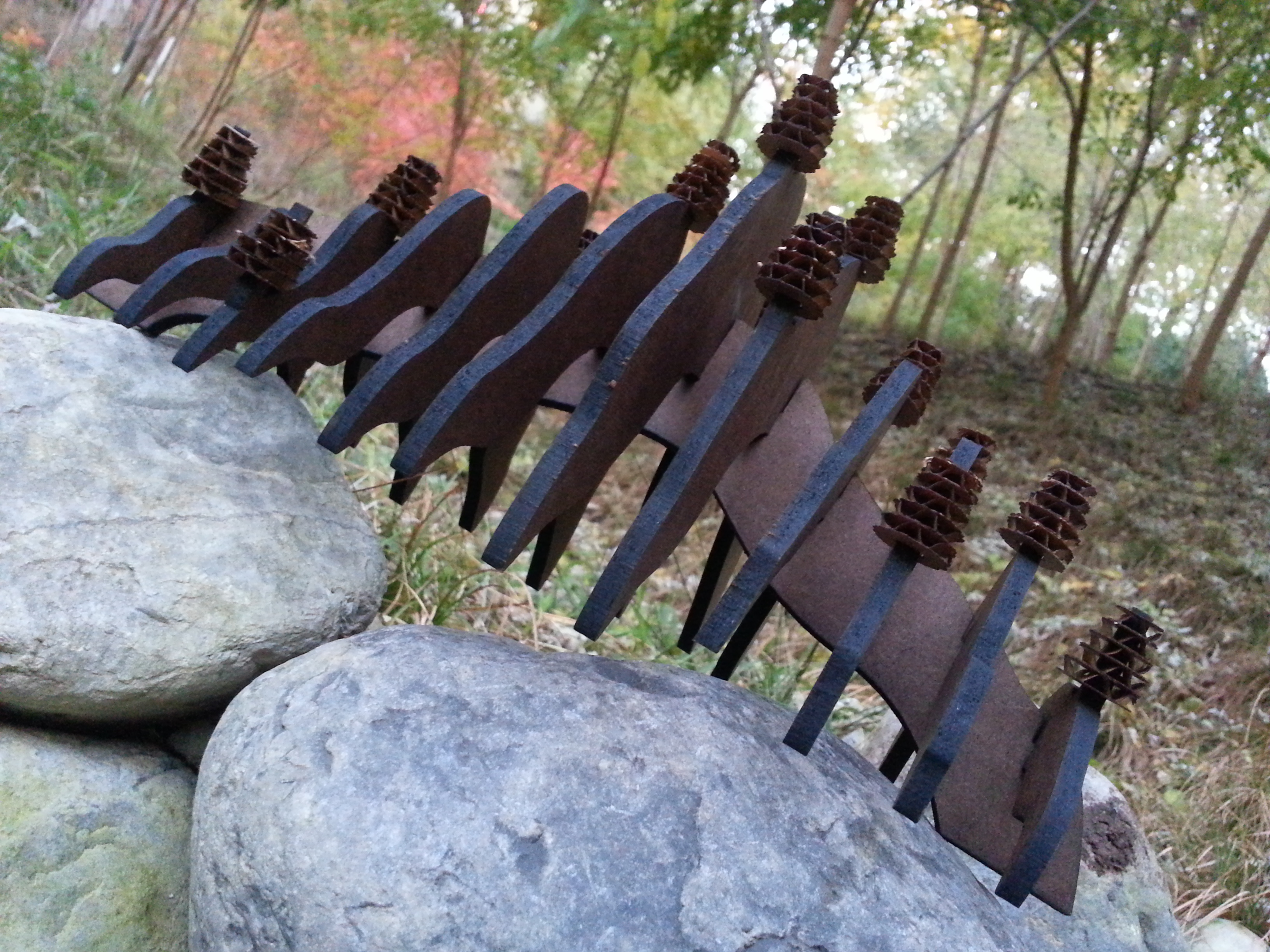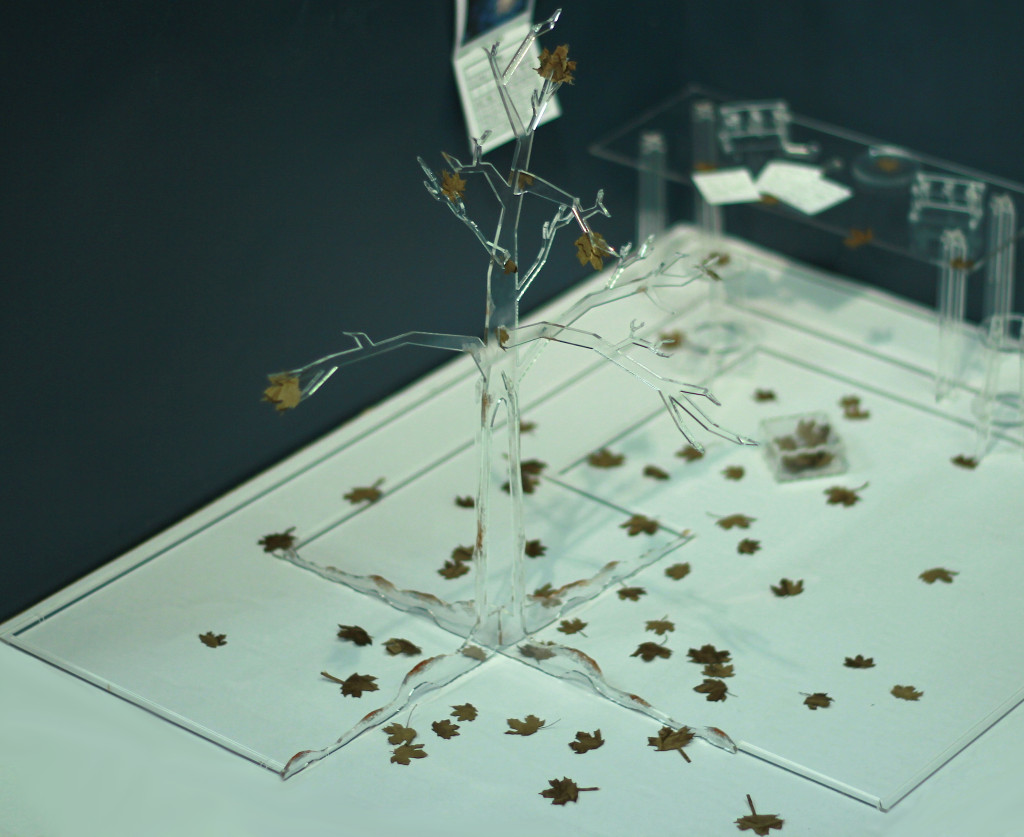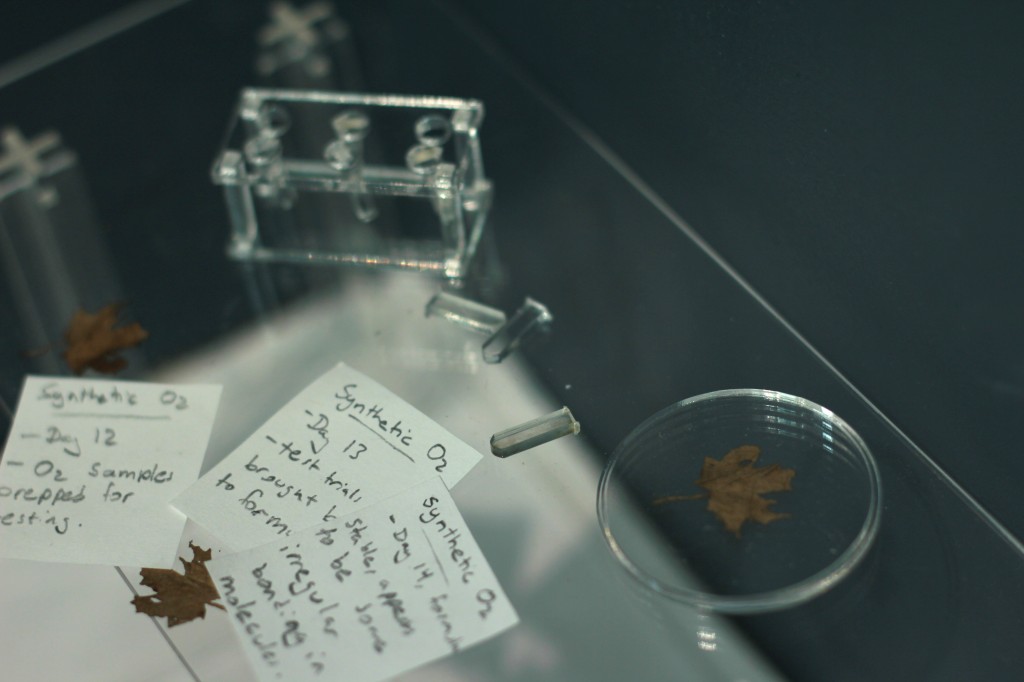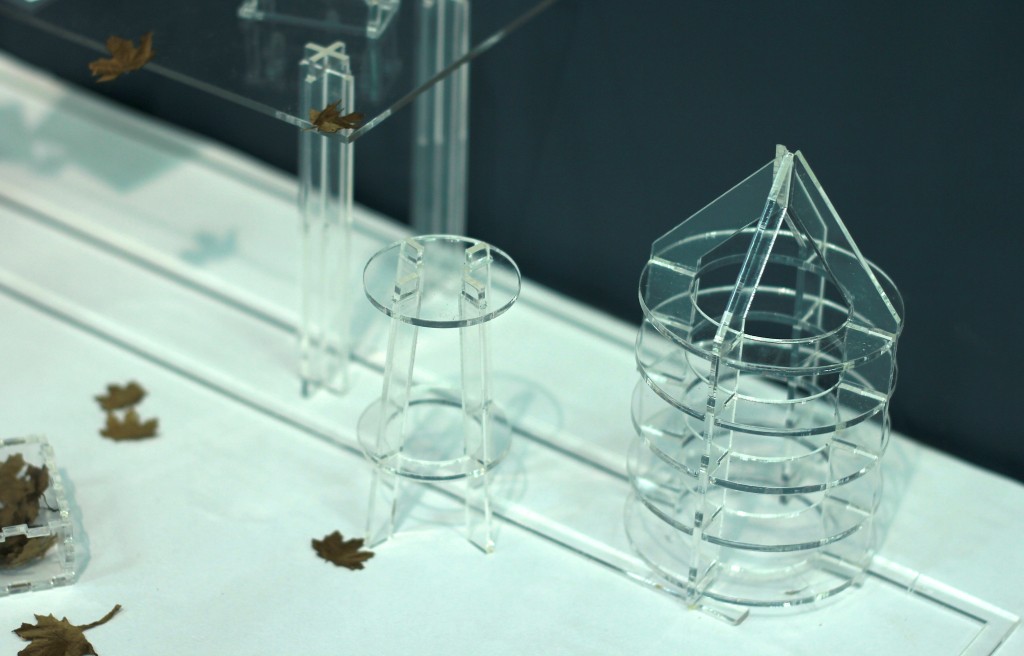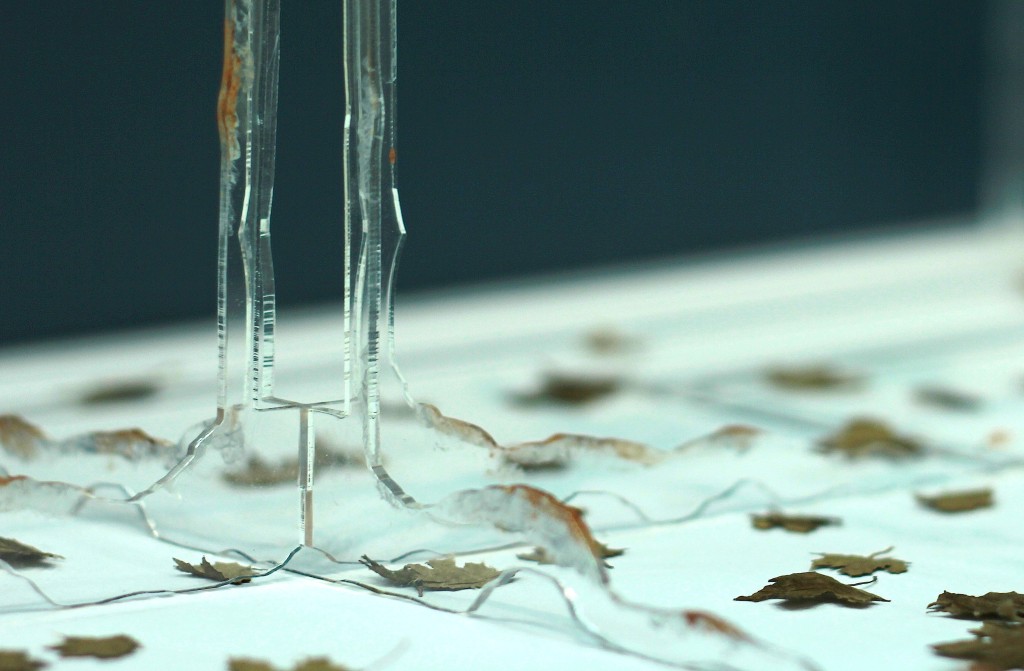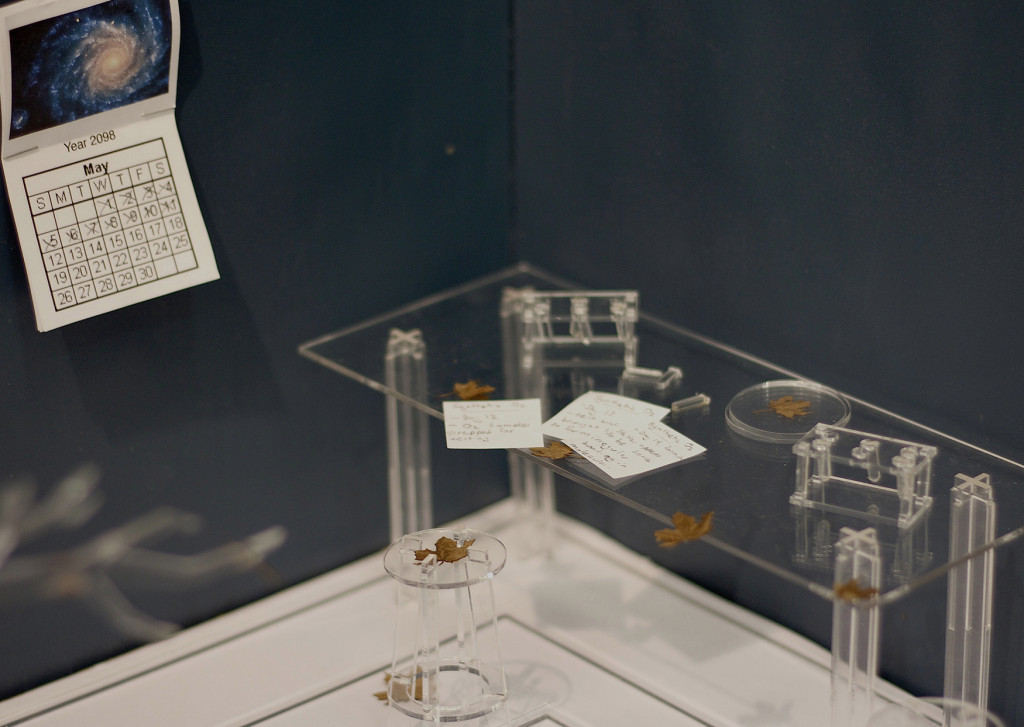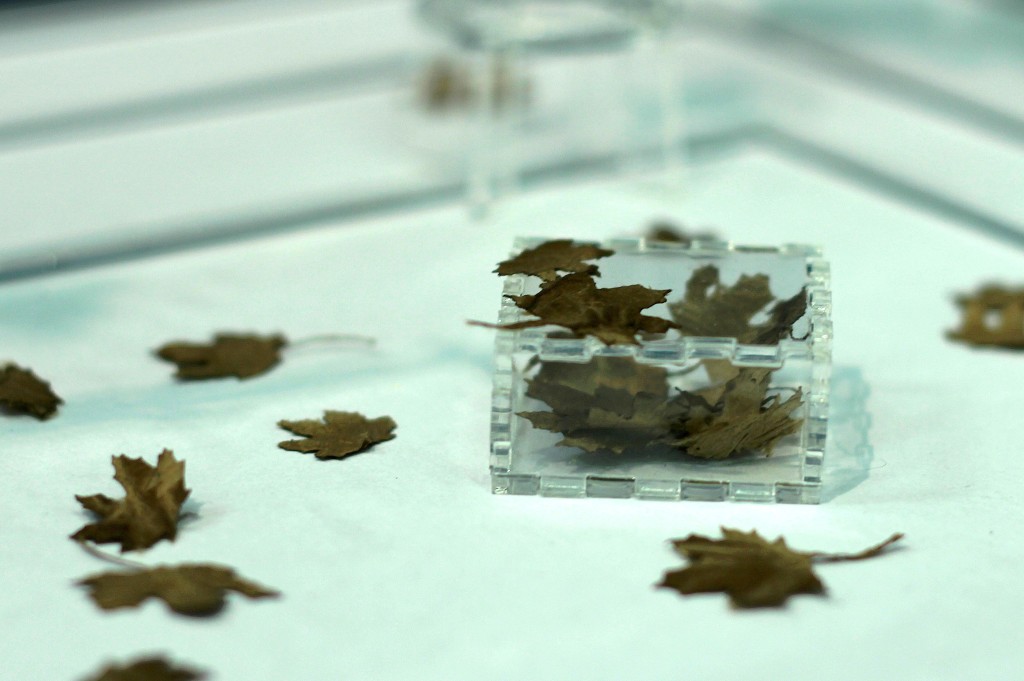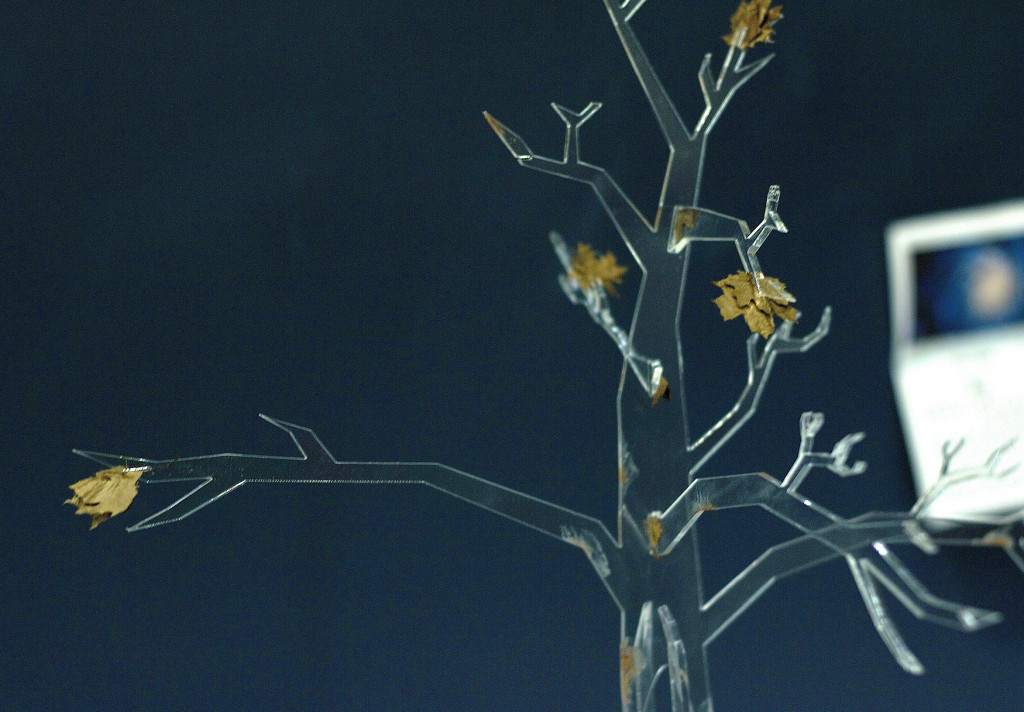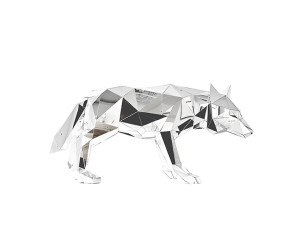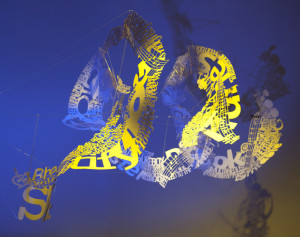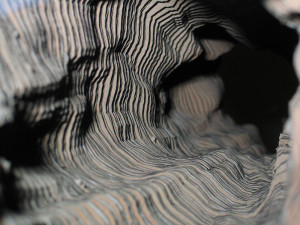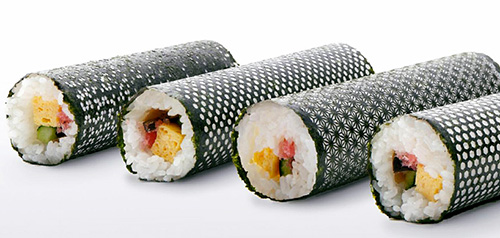Imaginary Landscape: “Panopticon” by Kaitlin Schaer (2013)
How would it feel if you knew there was always the possibility someone was watching you? In the climate of today’s privacy and information security crises, this imaginary landscape is perhaps not so strange. In the panopticon, you are held captive. A constant presence over you are the ones within the tower, watching- but you cannot see them. The chains of physical imprisonment are replaced by ones of manipulation and fear, and there is no escape.
This panopticon is constructed from 131 pieces of clear and black acrylic. 131 is appropriate being both prime, reflecting the harsh concept which this piece explores, and palindromic, reflecting the symmetry of the piece. By far the most common shape used is the triangle- the visual strength of this polygon, and the sharp angles allow for the sculpture to take on a fortress-like form. The clear pieces represent everything that is under watch, especially the upright triangles immediately surrounding the center tower. These pieces are the only ones without symmetry in their orientation, as they represent the prisoners within the panopticon. The opaque black pieces represent those who are watching, and who cannot be watched themselves. These pieces are concentrated into two areas: the center tower, from which all of the “prisoner” pieces might be viewed, and the small pieces along the outside ring, which serve to convey the idea that there is no escape from the panopticon.
Imaginary Landscape: “Earth’s Bones” by Miranda Jacoby (2013)
“Earth’s Bones” is about soil erosion due to deforestation. By combining the shapes of a human rib cage and a mountain, this work intends to drive home the idea of a future where humans have taken so much form the environment that it has become barren, and is thus unable to sustain life. In the first six pictures, a white background is used to denote the sterility of the bone mountain, as nothing can grow due to the loss of topsoil. The last picture shows the contrast between the bone mountain and a healthy hillside, highlighting how much we have, and how much we have to lose.
The total number of parts in this piece is 98. Of significance are the 13 pieces making up the base, which create 12 pairs of ribs connected by a spine to create a rib cage. According to New York’s City Waste Services, recycling a ton of cardboard saves 17 trees. Thus, there are 17 cardboard trees on the mountain, in a misguided attempt to turn the cardboard back into trees that succeeds in form, but not function. On the topic of materials, Masonite was chosen for the bone mountain due to its color, which emulates the characteristic brown tone of dinosaur bones often seen in museums. Coincidentally, the joinery used to make the ribcage was inspired by the dinosaur models one can find at museum gift shops.
(Upon further research, the 17-tree figure many not be as accurate as previously thought.)
Imaginary Landscape: “Project: O2” by Lauren Valley (2013)
“Project: O2” showcases a hypothetical world in the year 2098 where urbanization has taken over. Throughout the years, the rain forest has slowly been destroyed and natural environments have been obliterated by man. But despite this grim future, there have been steps taken to resist the environmental destruction–laboratories like the one show above have been created to produce artificial trees that yield a fresh supply of synthetic air.
The darker lab walls were used to show contrast to the clear, hopeful (and partially-rusted) tree, and the dead looking leaves were used to really highlight the bleak situation the fictional world is enduring. The clear, sleek acrylic was used to give the laboratory and the man-made tree a futuristic look. Overall, this piece contains 199 pieces, including both acrylic parts and paper leaves. This seemingly incomplete number was chosen specifically to show how progress in the fictional world is being made; however, there is still some way to go before the world becomes, in a sense, whole again.
Laser Cutter Example: “Untitled” by Arran Gregory (2013)
Gregory takes pieces of mirror and cuts them into precise shapes so that he can carefully fit them together to create creatures or objects. “Ideas of wilderness, predatory forces of nature and the wild
form the backbone of my artworks. ” said Gregory. (More…)
Laser Cutter Example: “Art Speaks” by Ebon Heath (2011)
Ebon Heath used laser cutting technology to cut through various papers and create a display of interchanging of words. Then he strings them up into sculptures, chandeliers or extensions of a real human being. Ebon changed the communication with words, which is more audio, into a visual communication. (More…)
Laser Cutter Example: “Beyond the Screen” by Leander Herzog (2008)
Leander Herzog created these beautiful organic forms through a series of code he created in processing. The generative cardboard cutouts are then stacked together to create these tall mountainous forms. This technique reveals that remarkable landscapes can be created with abstract simple forms. (More…)
Laser Cutter Example: “Design Nori” by I&S BBDO (2009)
These are seaweed squares with intricate patterns of special Japanese symbolism. It was created and mass-produced with laser-cutter on seaweed and sold at the Mitsubishi Ichigokan Museum in Tokyo.
More… (unavailable in company website)
